Don't wanna be here? Send us removal request.
Text
Top Neuropathy Doctor's Best Advices for Relief

Dealing with neuropathy pain can make every day feel hard. Yet, top neuropathy doctors share hope through their insights. They know a lot about managing neuropathic pain, helping people live better. They show the best ways to treat neuropathy, making a big difference for those affected.
With their help, you're not alone in seeking comfort. These doctors offer tips and support on your path to feeling better.
Finding relief starts with getting personalized care from top experts. They work hard to ease your pain, tailoring treatments based on the latest research. These specialists use new methods to improve nerve health and your life's quality.
You can trust these experts to guide you every step. They are leaders in the field, ready to help you heal.
Key Takeaways
Personalized management strategies are central to effective neuropathic pain control.
Leading neuropathy doctors provide essential expert guidance on neuropathy.
Vetting nerve health strategies is vital for improving overall quality of life.
Embracing advanced neuropathy treatment options can offer significant relief.
A commitment to innovation underscores the success in managing neuropathy.
Understanding Peripheral Neuropathy: Symptoms and Causes
Peripheral neuropathy affects millions around the world. It shows nerve damage signs from mild discomfort to intense pain. Knowing the different peripheral neuropathy symptoms is key to early diagnosing neuropathy and creating an effective treatment plan with the help of a great neuropathy doctor. Let's talk about the symptoms and causes of neuropathy. It gives detailed info to help manage this complex condition.
Identifying Symptoms of Neuropathy
Catching the signs of nerve damage early leads to a quick diagnosis. This is vital for effectively treating peripheral neuropathy. The symptoms can vary a lot in type and strength:
Numbness or tingling in the feet or hands, which may spread upwards into the limbs
Sudden, sharp pains that are more pronounced at night
A feeling of wearing an invisible glove or sock
Muscle weakness, especially if it impacts mobility or coordination
Changes in blood pressure, leading to dizziness or lightheadedness
Knowing these peripheral neuropathy symptoms is important. It helps those trying to understand their own experiences with this condition.
Common Causes Behind Neuropathic Pain
The causes of neuropathy vary just like the symptoms. Here are some common reasons:
Diabetes, which is a top cause of neuropathy all over the world
Infections that affect the nerves, like shingles or HIV
Exposure to toxins, including some medicines or chemicals
Being more likely to get nerve damage because of genetics
Injuries that directly harm the nerves
Finding these causes helps doctors make treatments. They aim to treat both the symptoms and root causes of the pain.
youtube
Best Advices from a Neuropathy Doctor for Managing Pain
For effective nerve pain relief, it's vital to have a strategy that fits your needs. Using different pain management techniques will greatly improve your life. Let's look at tips that blend neuropathy doctor advice with useful actions to help you cope.
Personalized Neuropathy Care: Consult with a specialist to create a management plan that addresses your specific symptoms and lifestyle.
Physical Therapy: Engage in guided exercises to maintain mobility and reduce pain.
Meditation and Relaxation Techniques: Reduce stress, which can exacerbate nerve pain, through meditation and breathing exercises.
Regular Check-Ups: Frequent consultations with your neuropathy doctor to adjust your care plan as needed for optimal nerve pain relief.
These methods play a crucial role in managing neuropathic pain, helping you enjoy a better life. Always remember, finding what works best for you involves customization and ongoing advice from professionals.

Medications Recommended by Experts for Neuropathy Relief
Finding the right medicines is essential for easing neuropathy pain. Health experts often suggest a mix of over-the-counter pain relief, prescription drugs for neuropathy, and topical treatments for nerve pain.
Over-the-Counter Solutions and Supplements
For slight neuropathic pain, over-the-counter pain relief is a first step. It offers temporary ease. These often include drugs like NSAIDs or acetaminophen. Ingredients like alpha-lipoic acid and acetyl-L-carnitine are also helpful for nerve health.
Prescription Medication Insights
As symptoms get worse, prescription drugs for neuropathy become key. Gabapentin or pregabalin are common for serious nerve pain. They stabilize nerve signals and are essential for severe symptoms.
Topical Treatments That Can Provide Comfort
Topical treatments for nerve pain focus directly on pain areas. This is good for those avoiding pills. Creams and patches with lidocaine or capsaicin offer fast, localized pain relief.
Always consult with a healthcare provider to tailor a treatment plan specific to your symptoms and medical history.
Monitor the effectiveness of the medication and make adjustments as needed.
Be aware of any potential side effects associated with both prescription and over-the-counter medications.
By using different neuropathy medications, many find relief. This helps improve their life quality.
Importance of Diet and Nutrition in Neuropathy Treatment
Diet plays a key role in managing neuropathy. A diet focusing on nerve health can relieve symptoms and help regenerate nerve tissues.
Experts highlight the importance of certain nutrients for neuropathy management. Let’s explore these dietary elements closely:
Foods that Support Nerve Health
Leafy greens like spinach and kale, which are rich in magnesium and B-vitamins.
Fatty fish such as salmon or mackerel, known for their high omega-3 fatty acids content, crucial for nerve repair.
Whole grains that provide essential B-vitamins to boost nerve health.
Nuts and seeds, especially almonds and sunflower seeds, which are high in Vitamin E and magnesium.
Vitamins and Supplements to Consider
Some supplements can offer extra help:
Vitamin B12 supplements are often recommended to support nerve regeneration and protect against nerve damage.
Alpha-lipoic acid, a potent antioxidant that can help to improve nerve function and reduce symptoms of neuropathy.
Curcumin supplements, known for their anti-inflammatory properties, can also help in reducing neuropathic pain.
A diet change supports nerve health and boosts overall wellbeing. It’s a comprehensive way to treat neuropathy.
Innovative Therapies in Neuropathy Care
The field of neuropathy treatment is changing due to new innovative neuropathy treatments and cutting-edge therapies. These advances help with symptoms and could also help recover nerve health.
Nerve regeneration technology is at the core of this progress. It has seen major improvements recently. This tech aims to fix and regrow nerves damaged by neuropathy. Doctors can now provide advanced neuropathy care like never before.
Stem Cell Therapy: Uses stem cells to fix damaged nerves and help grow new ones.
Electrical Nerve Stimulation: Sends tiny electric currents to the hurt area. This lessens pain and helps nerves work better.
Genetic Engineering: Changes genes in nerve cells to improve their ability to repair themselves.
These therapies blend research, innovation, and clinical practice for effective neuropathy treatments. As they develop, they offer hope to reduce or even reverse neuropathy's effects.
Looking into these innovative neuropathy treatments is a source of hope. It opens up possibilities for a life without chronic neuropathic pain.

Home Remedies and Lifestyle Adjustments for Neuropathy Sufferers
If you're dealing with neuropathy, adding home remedies for neuropathy to your routine can help a lot. These simple solutions are easy to find and can really support your health. For example, a warm Epsom salt bath can calm nerve pain and relax your muscles. Mindfulness activities like deep-breathing or meditation can also lessen stress and anxiety that comes with chronic pain.
Changing your lifestyle to ease nerve pain is critical for better everyday living. It's good to stay active, but stick to exercises that are easy on your nerves, like swimming or biking. Ensuring you get enough sleep helps lessen pain and tiredness. Also, wearing comfy shoes can protect your feet and prevent further injuries. These self-care techniques target your symptoms and boost your overall health, leading to more independence and a better life.
Making your home more neuropathy-friendly is another great step. Add cushioned mats in places where you stand a lot, or use ergonomic furniture for better posture. These changes, when combined, offer a comprehensive way to improve how you live with neuropathy. This approach helps you manage your symptoms better and enhances your wellbeing right at home.
0 notes
Text
The Science of Sleep: How Quality Rest Enhances Fitness Performance

Athletes know that the pursuit of excellence is not bound by the hours spent in training alone; the secret weapon in an athlete's arsenal often lies in the quality sleep benefits that accompany rigorous practice. In exploring the symbiotic relationship between sleep and athletic performance, we uncover the delicate balance that exists between rest and fitness. This essential period of repose allows the body to repair and strengthen itself, a fundamental aspect of fitness recovery and enhancement.
Key Takeaways
Understanding the inherent link between sleep and optimal athletic performance.
The contribution of quality rest to effective fitness recovery strategies.
Exploration of sleep's regenerative processes and their impact on physical prowess.
Scientific perspectives on sleep's role in both mental and physical conditioning for athletes.
Practical insights into sleep optimization geared towards fitness enthusiasts.
The Vital Role of Sleep in Muscle Recovery and Growth
Restorative sleep is not merely a respite for the mind, but a critical period for muscle recovery and growth. During slumber, the body engages in a series of physiological transformations that rejuvenate and repair muscles stressed by physical activity. Exploring the mechanisms of sleep cycles and their influence on muscle repair offers valuable insights for athletes seeking to optimize recovery and performance.
youtube
Understanding Sleep Cycles and Muscle Repair
Our sleep is composed of several stages, cycling between non-REM sleep and REM sleep. Non-REM sleep, especially the deep sleep phase, is particularly beneficial for muscle recovery. It's during this phase that blood flow to muscles increases, allowing for repair and growth. Important restorative functions related to muscle recovery, such as tissue growth and hormone release, predominantly happen during these critical hours of deep slumber.
The Impact of Deep Sleep onProtein Synthesis
One of the most crucial aspects of muscular recuperation and hypertrophy is protein synthesis, an anabolic process that repairs muscle fibers and spurs growth. Deep sleep significantly contributes to this process. Growth hormone levels, instrumental in the repair of muscle tissue, surge during the deep stages of non-REM sleep. These natural periods of deep sleep are thus essential for athletes to fully harness the benefits of their training regimens.
Optimizing Sleep for Maximum Recovery Benefits
To fully benefit from the reparative potential of sleep, athletes should strive for recovery optimization within their nightly regimen. This includes adhering to a consistent sleep schedule, ensuring an environment conducive to quality sleep, and potentially addressing dietary habits that may influence sleep patterns. Leveraging the natural cycle of REM and non-REM sleep, by obtaining adequate amounts of deep sleep, can significantly impact muscle recovery and subsequent growth.
Nutrition and Its Interplay with Sleep for Enhanced Fitness Performance

Macronutrients, which include carbohydrates, proteins, and fats, are foundational to an athlete's energy levels and recovery. Interestingly, these nutrients also dictate sleep quality. For instance, carbohydrates, when consumed in the right quantities and timing, can assist in the production of serotonin, a precursor to the sleep hormone melatonin. Proteins provide amino acids like tryptophan, which not only supports muscle repair but also enhances sleep quality.
On the other hand, micronutrients like magnesium, zinc, and certain B vitamins are known to support neurological functions and directly influence sleep patterns. Deficiencies in these essential nutrients can lead to sleep disturbances that not only hinder recovery but also impair an athlete's ability to perform at their peak.
Eating the right balance of sleep-enhancing foods can therefore be as crucial as the workout itself. For example, foods that are rich in tryptophan, such as turkey and dairy products, have been shown to promote better sleep, while almonds and walnuts, with their healthy fats and magnesium content, may improve sleep duration and quality.
When considering the timing of meals, research suggests that late-night eating can disrupt sleep architecture. To align an athlete’s dietary routine with their circadian rhythm, a substantial meal should ideally be had earlier in the evening to ensure an uninterrupted night of restorative sleep.
Carbs: Choose complex carbs like sweet potatoes to boost serotonin without spiking blood sugar levels.
Protein: Opt for lean proteins which contain both tryptophan and essential amino acids for recovery.
Fats: Include sources of omega-3 fatty acids, such as salmon, to support brain health and restful sleep.
Magnesium-rich Foods: Incorporate spinach or avocados into your diet to aid muscle relaxation and sleep.
Collectively, these nutritional strategies form an integral part of an athlete’s regimen, promoting not just adequate sleep but also ensuring that the sleep is conducive to high-level performance and recovery.
Strategies to Improve Sleep Quality for Better Athletic Results
Attaining peak athletic performance isn't solely about rigorous training and strict diet plans. Quality rest reigns equally supreme in the quest for fitness excellence. Let's delve into effective sleep strategies that promise to enhance the restorative power of sleep, thereby facilitating impressive athletic outcomes. A judicious combination of sleep quality improvement techniques, an athlete pre-sleep routine, an optimized sleep environment, smart use of sleep technology, and well-timed rest days can enact a transformative impact on an athlete's performance.
Developing a Pre-Sleep Routine for Athletes
A disciplined pre-sleep routine acts as a signal to the body, ushering in a state of tranquility essential for restorative sleep. Simple acts like dimming the lights, reading, or practicing relaxation techniques can significantly aid in unwinding. By establishing a series of habitual pre-bedtime actions, athletes create a psychological threshold that fosters quicker and deeper sleep, thus amplifying recovery and performance.
Environment and Technology: Crafting a Sleep-Inducing Bedroom
The sleep environment is pivotal for high-quality slumber. Athletes should aim for a cool, dark, and quiet bedroom, essential for optimal sleep. The choice of bedding also plays a critical role, with materials that regulate temperature and provide comfort being ideal. Incorporate sleep technology judiciously; while devices that track sleep patterns could be beneficial, interactive screens should be avoided before bedtime to prevent disruption of natural circadian rhythms.
The Role of Rest Days in Sleep Patterns and Fitness
Rest days are not an interruption to training but a fundamental component of any successful athletic regime. They allow the body to recover and prevent overtraining, which can negatively affect both sleep and performance. Strategic planning of rest days can improve sleep quality, thereby enabling better recovery and ultimately enhancing athletic performance. Active recovery, which includes gentle movement and stretching on rest days, further aids in maintaining a consistent sleep schedule, vital for top-tier fitness results.
Read more:
Sciatica Relief: Learn About Really Effective Treatment Options
Maximize Fitness Goals With A Personal Trainer In Nijmegen
Earn Cash Exercising With Fitness Apps: Get Paid To Workout At Home
0 notes
Text
Revitalize Your Life: The Unspoken Benefits of Testosterone Replacement Therapy

Are you feeling tired, sluggish, and lacking in motivation? Has your zest for life diminished over the years? If so, you may be experiencing low testosterone levels. But don't worry because there's a safe and effective solution: Testosterone Replacement Therapy (TRT). In this article, we will explore the unspoken benefits of TRT and how it can revitalize your life. Whether you're a man or a woman, testosterone plays a really crucial role in your overall well-being.
From improving mood to increasing muscle mass and enhancing cognitive function, the benefits of TRT are numerous and life-changing. But what sets TRT apart from other treatments? Unlike quick-fix solutions that provide temporary relief, TRT addresses the root cause of low testosterone by replacing what your body is lacking.
With individualized treatment plans and the support of qualified medical professionals, TRT can help you restore balance and reclaim your vitality. Don't let low testosterone hold you back any longer. Discover the power of TRT and unlock a new chapter of energy, happiness, and fulfillment in your life.
Understanding Testosterone and Its Importance in the Body
Testosterone, as you know, is a hormone primarily produced in the testes in men while in the ovaries in women. It is responsible for a wide range of bodily functions, including the development of reproductive tissues, the growth of muscle as well as bone mass, and the stimulation of sperm production.
Testosterone plays a really vital role in regulating mood, cognitive function, and overall energy levels. In men, testosterone levels are typically at their highest during adolescence and early adulthood, but they gradually decline with age. In women, testosterone levels are much lower, but they still play a vital role in maintaining overall health and well-being. Unfortunately, both men and women can experience a decrease in testosterone levels as they age, leading to different symptoms and health issues.
Signs and Symptoms of Low Testosterone Levels
Low testosterone levels have a very significant impact on your physical and mental well-being. Some common signs/symptoms of low testosterone include fatigue, decreased libido, erectile dysfunction, depression, irritability, reduced muscle mass, considerably increased body fat, as well as a decreased bone density.
These symptoms can vary from person to person and can significantly affect your quality of life. Suppose you are experiencing any of these symptoms. In that case, it's essential to consult with qualified medical professionals who can evaluate your hormone levels and determine if TRT is a suitable treatment option for you.
The Benefits of Testosterone Replacement Therapy
Testosterone Replacement Therapy offers many benefits that can improve various aspects of your life. One of the most noticeable benefits is increased energy levels. As testosterone levels decline, many individuals experience fatigue and lack energy. TRT can help restore energy levels, making you feel more vibrant and motivated throughout the day.
Additionally, TRT can enhance mood and reduce symptoms of depression and irritability. Testosterone plays a crucial role in regulating neurotransmitters in the human brain, such as serotonin and dopamine, responsible for mood regulation. By optimizing testosterone levels, TRT can help improve overall emotional well-being.
Another significant benefit of TRT is its impact on sexual health. For men, low testosterone levels can lead to decreased libido, erectile dysfunction, and reduced sexual performance. TRT can help restore testosterone levels, improving sexual desire and function. In women, TRT can also have a positive impact on sexual health by increasing libido and reducing sexual discomfort.
Additionally, TRT can aid in the development and maintenance of lean muscle mass. Testosterone is key for muscle growth and repair, and low levels can lead to muscle loss and decreased strength. By undergoing TRT, individuals can experience increased muscle mass, improved strength, and enhanced athletic performance.
Furthermore, testosterone replacement therapy near me can have a positive impact on cognitive function. Testosterone plays a crucial role in brain health, including memory, concentration, and problem-solving abilities. Low testosterone levels are directly linked to cognitive decline and a notably increased risk of conditions such as Alzheimer's disease.
TRT can help improve cognitive function, enhancing memory, focus, and mental clarity. Additionally, TRT can improve bone density and reduce the risk of osteoporosis. Testosterone is vital for maintaining bone health, and low levels could lead to decreased bone density as well as an increased risk of fractures. By undergoing TRT, individuals can strengthen their bones and reduce the risk of osteoporosis-related complications.

Common Misconceptions about Testosterone Replacement Therapy
Despite the numerous benefits of TRT, there are still some misconceptions surrounding this treatment option. One common misconception is that TRT is only for older individuals. While it is true that testosterone levels decline with age, younger individuals can also experience low testosterone levels due to various factors such as stress, poor lifestyle choices, and certain medical conditions. TRT is not limited to a specific age group and can benefit individuals of all ages who are experiencing low testosterone symptoms.
Another misconception is that TRT will lead to aggressive behavior or an increase in anger. Testosterone is often associated with aggression, but the truth is that TRT is carefully monitored and individualized to ensure the restoration of optimal testosterone levels without causing adverse side effects. TRT is intended to provide balance and well-being, not to induce aggressive behavior.
Lastly, some people believe that TRT is a quick fix that provides instant results. While TRT can have a profound impact on your well-being, it is not an overnight solution. It takes time for your body to adjust to the therapy, and individual results may vary. Patience and consistency are key when undergoing TRT, as the benefits will gradually manifest.
How to Determine if You Are a Candidate for Testosterone Replacement Therapy
If you suspect that you may have low testosterone levels, it is crucial to consult with a qualified medical professional who specializes in hormone therapy. They will evaluate your symptoms, conduct a comprehensive medical history review, and perform blood tests to measure your hormone levels accurately. Based on the test results, they will determine if you are, in fact, a suitable candidate for TRT.
It's important to note that TRT is not appropriate for everyone. Certain medical conditions, such as prostate cancer and severe heart disease, may contraindicate the use of TRT. A thorough evaluation will help ensure that TRT is a safe/effective treatment option for you.

The Different Methods of Testosterone Replacement Therapy
Testosterone Replacement Therapy, as you probably know, can be administered in various forms, depending on your preferences and medical needs. The most common methods include injections, patches, gels, and pellets. Injections provide a quick and direct delivery of testosterone into the bloodstream, typically administered every week or two. Patches are carefully applied to the skin and release a steady flow of testosterone throughout the day.
Gels are directly applied topically to the skin and can be absorbed easily. Pellets are small implants inserted under the skin, releasing testosterone gradually over several months. The method selected will depend on convenience, desired dosage, and individual preferences. A qualified medical professional is vital to guide you through the selection process and help determine the most suitable method for your needs.
0 notes
Text
The Empath's Guide to Self-Care: Exploring Therapy Options for Emotional Healing

Welcome to The Empath's Guide to Self-Care! Are you an empath who often feels overwhelmed by the emotions of others? Do you find it challenging to navigate your feelings in a world that seems to be constantly bombarding you with emotional energy? If so, you're not alone. This guide is designed specifically for empaths like you seeking therapy options for emotional healing.
We understand the unique struggles and sensitivities that empaths face, and we're here to help you explore different therapy modalities that can support you on your journey toward self-care and emotional well-being. From traditional talk therapy to alternative approaches such as energy healing and art therapy, we'll explore various options. Join us as we embark on a transformative exploration of healing modalities tailored to the empath's needs. Get ready to prioritize your self-care and reclaim your emotional balance.
Understanding empathy and self-care
Empathy is a beautiful gift that allows us to connect deeply with others and understand their emotions. However, for empaths, this gift can sometimes become overwhelming. Empaths have an innate ability to absorb and experience the feelings of those around them, often to a point where it becomes difficult to distinguish between their emotions and those they've taken on from others. This constant emotional influx can lead to exhaustion, anxiety, and a diminished sense of self. That's why self-care is crucial for empaths.
Self-care is not a luxury; it's a necessity for empaths. It's about consciously taking the time and effort to nurture your emotional, mental, and physical well-being. By prioritizing self-care, empaths can recharge, set boundaries, and develop strategies to manage the emotional energy they encounter. Therapy can play an integral role in this self-care journey, providing empaths with the tools and support needed to navigate the complex terrain of their emotions.
Different therapy options for emotional healing
When it comes to therapy for empaths, there are various approaches to consider. Each modality offers unique benefits, and finding the policy that resonates with you and addresses your specific needs is essential. Let's explore some of the most common therapy options for emotional healing.
Traditional talk therapy
Talk therapy, also known as psychotherapy, is widely recognized and influential. It involves engaging in open and honest conversations with a highly trained therapist to explore the underlying causes of emotional distress. For empaths, talk therapy can provide a really safe as well as supportive space to express and process emotions. Through this process, empaths can gain insight into their empathic nature and develop coping mechanisms to manage their heightened sensitivity.

Cognitive-behavioral therapy (CBT)
Cognitive-behavioral therapy, or CBT, is a widely used therapeutic approach that identifies and changes negative thought patterns and behaviors. CBT can be particularly beneficial for empaths as it helps them develop coping strategies to manage their emotional sensitivity. In CBT, a therapist works with the empath to identify their triggers and negative thought patterns and then assists them in developing healthier ways of thinking and responding. By challenging negative beliefs and replacing them with more positive and adaptive ones, empaths can learn to regulate their emotions more effectively. CBT can also help empaths set boundaries and establish healthy relationships, reducing their emotional burdens.
Dialectical behavior therapy (DBT)
Dialectical behavior therapy, or DBT, is another therapeutic approach that can benefit empaths. Originally developed as a form to treat individuals with borderline personality disorder, DBT has since been recognized as an effective treatment for various emotional dysregulation issues. DBT focuses on teaching skills in 4 main areas: mindfulness, distress tolerance, emotion regulation, and interpersonal effectiveness. For empaths, DBT can provide valuable tools for managing intense emotions and improving self-awareness.
Eye Movement Desensitization and Reprocessing (EMDR)
One therapy option that has shown great promise for empaths is Eye Movement Desensitization and Reprocessing (EMDR). Originally developed as a form to treat post-traumatic stress disorder (PTSD), EMDR addresses many emotional issues. The therapy involves using bilateral stimulation, such as eye movements or hand taps, to help the brain process and reframe traumatic or distressing memories.
EMDR can be particularly beneficial for empaths who tend to absorb the emotions and experiences of others. By working with a trained EMDR therapist, empaths can learn to process and release the emotional energy they have taken on, allowing them to regain their emotional balance. EMDR can also help empaths develop healthy boundaries and strengthen their sense of self, enabling them to navigate the world with greater resilience and emotional stability.
Art Therapy and Creative Expression
Art therapy is another powerful tool for emotional healing that can be especially valuable for empaths. This therapy modality combines traditional talk therapy with various forms of creative expression, such as painting, drawing, sculpting, or collage-making. Through creating art, empaths can tap into their inner emotions and express them in a tangible and visual form.
Art therapy provides empaths with a safe and non-verbal outlet for their emotions, allowing them to explore and process their feelings uniquely and powerfully. It can help empaths gain insight into their emotions and experiences and provide a means of externalizing and releasing emotional energy. Art therapy also encourages self-reflection and self-discovery, enabling empaths to deepen their connection with themselves and their inner world.
Body-Based Therapies for Emotional Healing
In addition to traditional talk therapy and creative expression, body-based treatments can effectively support empaths on their healing journey. These therapies recognize the interconnectedness of the mind and body and focus on releasing emotional energy stored in the body.
One such body-based therapy is somatic experiencing, based on the understanding that trauma and emotional distress can become trapped in the body. Somatic experiencing helps empaths release this trapped energy through gentle body movements and bodily awareness. By tuning into physical sensations and allowing the body to release tension and stress, empaths can experience profound emotional healing and regain a sense of safety and groundedness.
Another body-based therapy that can benefit empaths is acupuncture. This ancient Chinese healing practice involves inserting really thin needles into points on the body to restore balance and promote energy flow. Acupuncture can help empaths release blocked emotions, reduce anxiety and stress, and improve overall emotional well-being. By addressing the energetic imbalances in the body, acupuncture supports empaths in finding dynamic equilibrium and cultivating resilience.
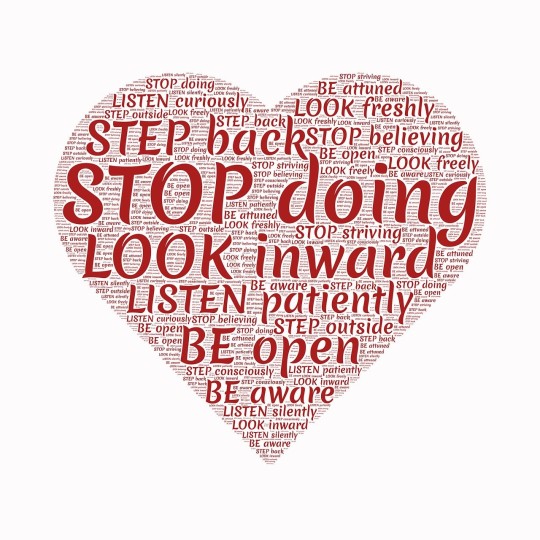
Finding the Right Therapy Option for You
With so many therapy options available, it can be overwhelming to determine which approach best fits you as an empath. Remembering that what works for one person may not work for another is essential. The key is to listen to your intuition and explore different modalities until you find the one that resonates with you and it is better to solve your problems.
When seeking therapy, it's crucial to find a qualified and experienced therapist who understands the unique needs of empaths. Look for therapists specializing in trauma, empathy, or working with susceptible individuals.
In addition to therapy, self-care practices are essential for empaths. It's vital to prioritize self-care daily and establish healthy boundaries to protect your energy. Engage in activities that recharge and nourish you, such as spending time in nature, practicing mindfulness or meditation, journaling, or engaging in creative pursuits. Surround yourself with supportive and understanding people who respect your sensitivities.
Healing is a journey, and it takes time and patience. Be gentle with yourself and celebrate every step forward, no matter how small. Trust that you have the strength and resilience to navigate your emotions and find emotional balance as an empath. With the right therapy and self-care practices, you can reclaim your power and live a life of emotional well-being and fulfillment.
So, take a deep breath, embrace your empathic nature, and embark on this transformative journey of self-care and emotional healing. You deserve it.
1 note
·
View note
Text
Exploring the Intersection of Pleasure: Sex Toys and Mental Health

In recent years, there has been a significant shift in society's perception of sexual pleasure and self-care. As discussions around mental health and well-being become more open and inclusive, sex toys as tools for self-discovery, empowerment, and improved mental health have gained traction. This article delves into the fascinating relationship between sex toys and mental health, exploring how these intimate devices can contribute to overall well-being.
The Mind-Body Connection
The mind-body connection is a powerful and intricate relationship that influences our health. When it comes to sexual well-being, this connection plays a crucial role. Using sex toys can enhance the mind's connection to the body, allowing individuals to explore their desires, overcome obstacles, and boost their self-esteem. The release of endorphins during sexual pleasure reduces stress and can alleviate symptoms of anxiety and depression.
Strengthening Relationships - Enhancing Intimacy and Communication
One significant aspect of mental health revolves around our interpersonal relationships. Sex toys can be valuable tools in strengthening intimacy between partners. They encourage open communication about desires and preferences, creating a space for trust and vulnerability. In turn, improved intimacy can enhance emotional well-being and satisfaction.
Self-Exploration and Empowerment - Taking Control of Your Pleasure
The journey to better mental health often involves self-discovery and self-empowerment. Sex toys can empower individuals to take control of their pleasure and explore their bodies without judgment. This increased self-awareness can boost self-confidence and promote a positive body image, which is essential to a healthy mindset.
Stress Reduction and Improved Sleep - Relaxation Through Pleasure
Stress is a common antagonist in our daily lives, and its effects on mental health can be profound. Engaging in sexual pleasure, with or without a partner, triggers the body's relaxation response, reducing stress levels. This natural stress relief can improve sleep quality, a critical factor in maintaining mental well-being.
Breaking Down Stigmas and Taboos - Promoting Sexual Positivity
Society's stigmatization of sex and sexuality has long been a barrier to open conversations about mental health and sexual well-being. Sex toys gradually break down these barriers, encouraging people to embrace their desires and enjoy sexual pleasure without shame. By promoting sexual positivity, we can create a more inclusive and accepting environment for discussions about mental health.

Sex Toys and Therapy: A Complementary Approach - Professional Guidance and Self-Exploration
While sex toys can offer numerous benefits for mental health, they are not a replacement for professional mental health care. However, they can complement therapy and counseling by allowing individuals to explore their desires and gain insights into their emotions and reactions. Some therapists even incorporate sex toys to help clients overcome specific challenges.
Choosing the Right Sex Toy - Personal Preferences and Comfort
Selecting a suitable sex toy is a highly individualized process. It's essential to consider personal preferences, comfort levels, and the desired experience when choosing a sex toy. Whether it's a vibrator, dildo, or other device, exploring options and seeking advice from trusted sources can lead to a more satisfying and mentally enriching experience. Visit the best sex toy store near you and find the proper product for your needs.
Overcoming Common Misconceptions - Myths and Realities
As the conversation around sex toys and mental health evolves, addressing common misconceptions is crucial. Some may believe that sex toys are only for those who are single or in unsatisfying relationships. These devices are for anyone interested in enhancing their sexual and mental well-being, regardless of relationship status. Dispelling these myths can encourage more individuals to explore their desires and improve their mental health.

The Role of Consent and Boundaries - Empowerment Through Consent
Consent and boundaries are essential aspects of any sexual encounter. Sex toys provide an opportunity to reinforce these principles, as they are entirely under the user's control. Setting and respecting personal boundaries with sex toys can positively impact overall mental health and foster healthier relationships.
0 notes
Text
Kratom: Natural Supplement

Kratom is a natural tree native to Thailand, Malaysia, Indonesia, and Papua New Guinea. It has been used for centuries for medicinal purposes.
Today, you can find it in herbal shops and cafes as a natural supplement. But, are you wondering what kratom is or if it is useful? This article will give you all the information you need to discover it.
Its leaves are used in many remedies. They can be brewed as tea, chewed, or even taken in capsule form.
Kava Kava and Kratom: Differences
Kava kava and kratom; have been part of traditional medicine for centuries. Kava is most used in Fiji, Samoa, and Tonga as a conventional remedy. Kratom originates from Southeast Asia and is generally used as a medicinal drug.
While they have a few similarities, some key differences set them apart as two separate yet similar plants. So let's take a closer look at their similarities and differences.
Similarities of Kava and Kratom
- Both kava and kratom are plants that can be consumed as a beverage or chewed as leaves.
- Both kava and kratom have been used as part of traditional medicine.
- Both kava and kratom are known for their anxiety-reducing and mood-enhancing properties.
- Both kava and kratom are used to treat symptoms of stress and depression.
- You can consume both kava and kratom d for their euphoric effects.
How is Kratom Used?
The leaves of the kratom tree contain many properties and are used for a wide variety of purposes. They can be brewed into a tea, chewed as leaves, or can be taken in capsule form. You can find it in some of these forms in kratombird.com.
Typically, those who use kratom will either brew the leaves and mix them into a beverage or use chewing as an alternative method.
Many users will mix kratom with ground leaves and then strain the mix through a cloth to remove the leaves. This method is known as "thickening" or "oxidizing."

The Benefits of Kratom
The alkaloids in kratom have been studied thoroughly, and it has been determined that they have a variety of benefits.
Pain Relief – Both the opioid-like effects and the non-opioid anti-inflammatory effects of kratom have been studied, and it has been shown by the results that kratom has significant analgesic and anti-inflammatory effects.
Improved Mood Elevated State of Consciousness – Many users have reported that kratom can elevate their mood and improve their state of mind.
Boosts Workout Motivation – Many users have also reported that kratom helps them have more motivation to work out.
Creates a Protected Mental State – Many who use kratom have noted an ability to protect their mental state better. This could be because kratom helps to mitigate the damaging effects of stress.
Reduces Anxiety – A significant number of users have reported that kratom helps to reduce their anxiety.
Ultraviolent Effects – Kratom has been known to produce effects similar to those of opioids but without the harmful side effects of opioids.
Side Effects of Kratom
Just like any other drug, kratom can have side effects. The side effects of kratom are few and far between but can include dry mouth, lightheadedness, increased heart rate, and constipation.
As with any drug, if you're not in a state of mild stress, you could experience mild side effects. However, it's important to note that these side effects are not typical and should be taken as a sign that you need to consume kratom less or stop using it entirely until you've gotten through your stress.
How to Take Your First Self-Administered Dose of Kratom
If you've been researching kratom and want to try it for yourself, there are a few factors that you'll need to take into consideration.
The first thing is to make sure that you are consuming the correct kratom strain.
There are many strains of Kraton, and not all are suitable for everyone. Some strains, for example, are known for being very potent and producing strong effects.
It can be good to start with a strain with a low potential for producing side effects and then work your way up to strains with a higher potential for producing stronger effects.
Final Words: Should You Try Kratom?
If you've been looking for a natural way to help with anxiety, pain, and mood disorders, then kratom might be worth a shot.
While it's easy to get swept up in the hype surrounding kratom, it's important to remember that this is a supplement – not a replacement for prescription drugs.
If you're interested in trying kratom, make sure to research the different available strains and purchase a supplement that has a low potential for side effects.
Keep in mind that kratom isn't for everyone and that you should only consume it with the supervision of a licensed healthcare provider.
You may be curious about kratom and haven't made up your mind yet, but I guarantee you'll be amazed at its benefits. There are various kratom products – both kava kratom and kratom tea – that are available for purchase online.
1 note
·
View note
Text
How Old Do You Have To Be To Get Braces?
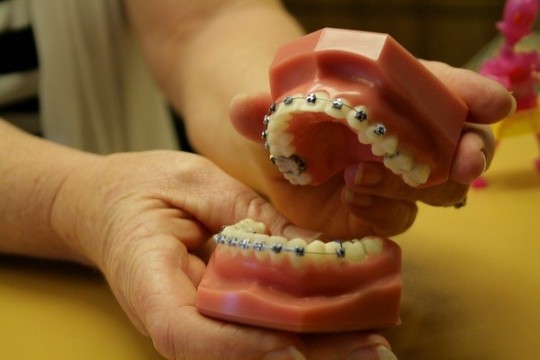
Experiencing dental problems can be felt by anyone, at any age or gender. This makes it unbearable for children who may find it challenging to accommodate the dental treatments offered.
What most people forget is that people experiencing dental problems, especially children, could not go through the same conditions if they practiced positive lifestyle habits and attended dental appointments. If you might be asking yourself the exact age whereby one should get dental braces and how they should be acquired, check out below for more information.
At what age should you get braces?
Braces can be applied to patients around six years old and above. However, confirming the dental process before the application is necessary. Several would provide the proper guidance on this.
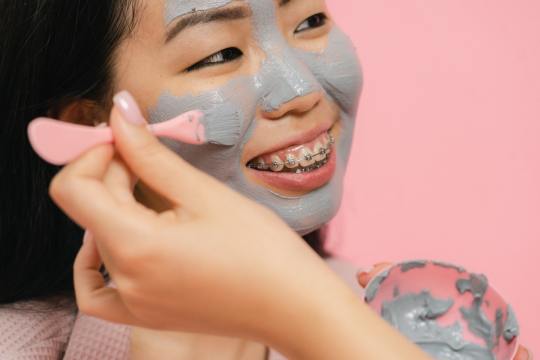
Essential things you should consider before getting braces
1. Seek for a dental assessment first
You cannot just assume and settle on the idea that you want braces. This is because there are different type's braces, and they should be applied differently. One needs to have the entire dental assessment handled. First, this is to identify the kind of dental problem you have, the type of treatment you need, and the duration that you ought to have the braces on.
Consider inquiring about any information that you might feel difficult to relate to, especially if you are undergoing a dental care service for the first time.
2. Inquire from the dental expert on the exact kind of treatment to acquire
Please do not make your dental treatment a service that the dental expert has to handle on their own. It would be best if you made the treatment a journey that you can walk through with the service provider's help. If you have a child who requires dental braces, consider checking out pediatric dentists in Bangalore. You also understand every process that you have to go through to have your dental structure at its best position.
3. Settle on the right dental service provider
Research on the dental clinics that are well known for fixing dental braces as well as the best pediatric dentists in Bangalore. They should be able to have enough resources and professionals to handle the dental treatment. A dental treatment center that has the best to offer is regarded as reliable such that any patient can feel accommodated at any given time. Ensure that you have as many referrals as you can to achieve the best dental health.
4. Identify different costs, care, and maintenance of the braces.
Before you have your dental braces fixed, it is essential to note the cost, care, and maintenance associated with them. This is for your weight out and understanding whether you can handle the treatment or not. You should be well braced with different treatment quotations from various service providers to ensure that you have a quality and professional dental clinic to work with.
Braces are found in other rates, be well informed on how they are distinguished and their application process. After removing the braces, there is the care and maintenance services offered differently when it comes to adults and children. Take note of some of these things to enjoy your dental health through the use of braces.
0 notes
Text
The Ultimate Guide to Health and Fitness: How to Stay Fit and Eat Well

Maintaining a good physical shape is essential for your health. In this way, you reduce the risk of heart disease, diabetes, or suffer from pressure and help prevent various cancer types. Follow a control plan for your weight; a constant loss of 1 to 2 pounds per week is recommended.
But some diets leave you unsatisfied, and for this reason, many people give up on them. However, there are low-carb and whole-food diets. These low-calorie foods are more effective for weight loss and much easier to follow compared to other diets. To start losing weight, you must change your lifestyle and start with a healthy diet.

Cut back on refined carbs.
One of the first steps to take if you’re looking to lose weight is to cut back on refined carbs and sugar. You can find refined carbs and sugar in processed foods like white bread, pasta, cookies, chips, and many more. These carbohydrates will spike your blood sugar levels after consumption, leading to weight gain. However, these refined carbohydrates also have calories and can give you an appetite soon after eating them.
Each meal should include protein, fat, and vegetables.
Every meal should include protein, fat, and vegetables. This will help you feel fuller for more extended periods and make it easier to avoid temptation or overeating while ensuring that you get all of your nutritional needs. For example, a healthy breakfast might be cereal with nuts and fruit, while dinner might be whole-wheat pasta with olive oil and vegetables.

Stay active; train at least 30 minutes a day.
You need to lead an active life to be healthy. It is good to dedicate at least 30 min of exercise each day. This will keep every organ and muscle in your body active, oxygenating you and getting your blood flowing, thus accelerating your heart rate and burning calories. Going to the gym is unnecessary; many workouts can be done in half an hour at home.
Water is life
The water cannot be missing. If you don’t drink enough water, you’ll feel hungrier and overeat. Drink a glass of water before each meal and snack. Eat a varied and balanced diet. Eat a variety of proteins, whole grains that contain fiber, fruits, vegetables, healthy fats, and low-fat dairy products.
It is important to include proteins and carbohydrates at breakfast, so you will have enough energy during the day. You should also avoid consuming multiple carbohydrates at once.
Conclusion
To see results, you must set a goal and follow a plan. When you get it create another. How do you want to feel? What is your relationship to food? What are your priorities in life? Once you have the answers, you can start laying out a plan to get there—whether it’s through an online fitness plan, a body-weight workout in the park, or the latest fitness craze.
Remember that consistency is key—the more you can establish healthy habits, the more likely you are to succeed in reaching your goals.
0 notes
Text
The Best Exercises for Women to Get Shredded Without Going to the Gym

Getting in shape and staying strong is hard. It takes sacrifice, a lot of sweat, dedication and time. With so many different exercises to choose from, it can be hard to stick to one routine that yields the results you want- especially if you don't have a gym membership. But don't worry! The best exercises for women and other folks who lack the time and resources to go to the gym are right here!
This article will outline five easy yet effective exercises that you should be able to do at home or anywhere else. It's important to continue with your routine, even if you've never done it before; better start now!
Why Exercising is Important
We know it's tough to find the time and energy to workout when juggling a million other things. But get this: exercise helps both your mind and your body. It gives you more energy and helps you sleep better. Exercising also relieves stress and makes you happier and healthier. The benefits of exercise are numerous, so it's important that we find the time to do it!

Equipment-Free Exercises
The first group of exercises we'll be covering is equipment-free. This means that you can do them anywhere and don't need any equipment except your own bodyweight to get the desired effect. These exercises are perfect for people who lack time or resources, such as a gym membership, but still want to get in shape and stay strong. They are also perfect for beginners because they are easy and help you master your weight.
Push-ups: Target the chest, triceps, and core muscles while also improving your arm and shoulder strength. You do not need a lot of space and do not require any equipment.
Crunches: Crunches work out your entire abdominal region while activating your lower back muscles too. You can do them on the ground or against a wall with ease, which makes them extremely versatile and accessible at all times.
Dips: Dips work wonders on your arms, shoulders, chest, and triceps while targeting your core at the same time. All you have to do is find a sturdy object like a chair or table to hold yourself up by.
Squats: Squats not only strengthen your thighs but also target other leg muscles too! If you find yourself struggling to keep good form during squats, try using a chair or bench for support under your legs instead of lowering down all the way until they touch the ground.
Getting Started with Exercise
Exercising is the best way to stay healthy and strong. But if you haven't exercised before, the task can seem daunting. Don't worry! It does not matter if you have never exercised, the important thing is to start and not give up.
The first thing is to choose an area of the body you want to work on. If you are going to start with the abs it is simple, lie on your back with your knees bent and your feet flat on the floor. Put your hands behind your head and then tighten your abs as you bring your abdominal muscles up towards your spine. You might also try doing planks or sit-ups if those are exercises that appeal to you more than other kinds.
There are plenty of other exercises that can help strengthen different areas of the body, so it's always good to experiment with new ones until you find what works best for you.

The 5 Best Exercises for Women to Get Shredded Without Going to the Gym
Jumping Jacks: A classic exercise, jumping jacks are an excellent way to get your heart rate up and your blood flowing quicker, also a great way to warm up before other exercises.
Push-Ups: Push-ups are a basic exercise to strengthen arms and chest. You can do them anywhere- just find a solid surface that's about one foot off the ground and start doing push-ups!
Squat Thrusts: Squat thrusts are a great way to work out almost every part of your body at once. To do them, stand with your feet shoulder width apart and make sure you're holding yourself upright, then squat down and put your hands on the ground behind you (or as close as you can) then jump back into a plank position and jump back up! Keep repeating this until you're done for 1 minute, or until you're too tired to continue.
Crunches: Crunches will help tighten your stomach muscles as well as strengthen them, which is great for people who want to increase their core strength while they exercise. All you need is some floor space so get down on the floor on your back and start cranking out these ab-crunching exercises!
Lunges: Lunges will not only help with toning and stretching out leg muscles but it will also give your butt a nice little boost!
Conclusion
Achieving a lean, toned and sculpted physique doesn't have to involve hours of time in the gym. In fact, you don't need any equipment to get a great workout.
Here we leave you these five basic but very effective exercises that will provide strength and shape your body.
These exercises use your own body weight as resistance and can be performed in the comfort of your own home.
0 notes
Text
Lose Weight and Get Fit: Effective Exercises to Help Strengthen Your Belly
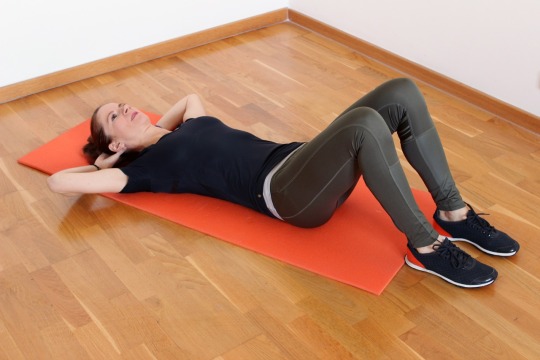
A six-pack or flat stomach is a goal for many people. But the abdominal muscles are some of the most difficult to achieve and exercise. To achieve results is important to work the different parts of the body, as many factors contribute to a healthy core. So if you’re looking to get a six-pack or a flat stomach, these exercises can help strengthen and shape your belly.
The best exercises to strengthen your core
In order to get a flat stomach, you should be focusing on exercises that strengthen your core. It is important to do several exercises that work the entire abdomen. For example, planks and crunches work your abs while hip bridges and bicycles work the lower abs. Work all the muscles so you burn fat evenly, and your six-pack looks better.
There are basic exercise routines that help you get a flat abdomen. For example, a variation of squats called plies targets the lower abs if done correctly. You could also use weights or do them at home with no equipment.

Tips on how to do these exercises
1. The plank: Place your hands on the ground, legs extended, body off the ground, and make sure your back is straight, so you must hold that position for at least 30 seconds per set.
2. Leg lifts: Lying on the floor, you can do both leg lifts at the same time, or raise your legs slightly (15-30 degrees) and do scissor lifts, alternating one foot up and one foot down.
3. The crunches: Lie flat on your back and grasp both of your ankles. Now curl up so that only your head and feet remain on the ground while tightening those abdominal muscles along with lifting those hips up off the ground. Remember to keep breathing throughout this exercise and not to use momentum to pull yourself up too far.
4. Bicycle crunches: on a mat with knees bent and feet hip-width apart. Bring both arms behind you, then lift one of those knees towards that elbow as if riding a bike while maintaining proper posture with shoulders flat against the floor and spine in a neutral position (not arched).
Repeat this movement by switching which knee is raised at a time while keeping the other one bent and straightened out in front of you. This will help stabilize each side of your core muscles separately while also engaging more muscle fibers to get stronger; leaner abs are quicker than before!

What foods help you lose weight?
Many effective exercises can help to strengthen your core. A healthy diet also influences your exercise. Eat fruits, vegetables, lean proteins, and whole grains; They will help you lose weight.
The best foods for weight loss vary depending on your personal needs and taste, but some general guidelines are. For example, if you want to lose weight and reduce calories, you might choose low-calorie foods like vegetables and fruit. If you need more protein, try lean meats or dairy products.
Each individual is different and will have differing needs when it comes to what food they should eat during a healthy lifestyle.
However, the following three tips can help get you started:
Make sure that at least half of what you eat is comprised of fruits and vegetables
Eat enough protein from either meat or dairy products in order to maintain muscle mass
Reduce your intake of processed sugar, caffeine, alcohol, fried foods, and refined carbohydrates
Conclusion
Having a toned stomach doesn’t just make you look better; it’s also the key to a healthier lifestyle. By doing some simple exercises and making a few changes to your diet, you can get that six-pack in no time—without having to go on a crazy diet. Start today and see the results!
0 notes
Text
A Guide to Solving Problems at Any Age

Can you solve your problems? Life comes with so many problems that one leads to another in most situations. However, without these problems, people would not advance in significant parts of their lives.
Consequently, the problem is not the problems in life but rather the inability to solve the problems. Primarily, people who know how to solve their problems live easy, fulfilling, and happier lives than those who don’t.
Solving problems is a significant part of growing mecda wrote more about this; hence the need for young to older adults to learn. Because problems differ from one person to another, it is hard to develop a definite formula to solve them.
However, some tips will help you live better in solving your problems.
Take Responsibility
It so happens that you are in the middle of a huge mess with no clue how to save yourself. Yes, problems can be inevitable and quite heartbreaking. At some point, you feel like you are innocent and don’t deserve to be in such a problem. Still, you feel like hibernating under a massive rock till the problem fades.
However, hiding, running and even deny the problem will not do any good now or later. The best way would be to understand that all happens for a reason. In this case, life has a lesson regarding your problem to teach you. Therefore, it would be best to take responsibility and use the problem as a stepping stone to a better life and not repeat it.
Avoid Assumptions

Taking responsibility is the first step to correctly solving a problem. Even better, it is ideal to use the past lessons to face the current situation armed. As the proverbial saying goes, experience is the best teacher.
This way, avoid making assumptions on how you should handle a significant current problem. But instead, use the past insights and clues to make the present moment better. Please remember that what was practical in the past can fail to work in the present times.
Make a Question from Your Problem
Usually, asking the right questions will give you the correct answers. Most of life’s unresolved cases are due to asking the wrong questions or failing to ask at all.
With this in mind, it would be best to turn your problem into a question differently. This is an intelligent move because asking a question is likely to yield potential answers. Better still, one can focus on looking for the answers rather than the burden of the problem to solve. In every question you ask based on your problems, you gain insights into solving problems while looking for solutions.
Consider Other Perspectives
Even if they are your problems, you don’t need to bear the burden alone. Most times, you can lack the ability to solve all the problems in your life. That is okay.
In such times, however, it would help to seek alternative solutions or means to solutions. Usually, people prefer browsing the internet for answers, reading books and even seeking the service of a renowned life coach like ariacoach.com. An extra and qualified perspective will help you a great deal in equipping you with problem-solving skills for future references.
There you go! Problems do not occur because you are wrong; you need to put that in mind. With the above skills, do you think you can solve your problems?
0 notes
Text
Worst Practices for Your Eyes You Should Avoid
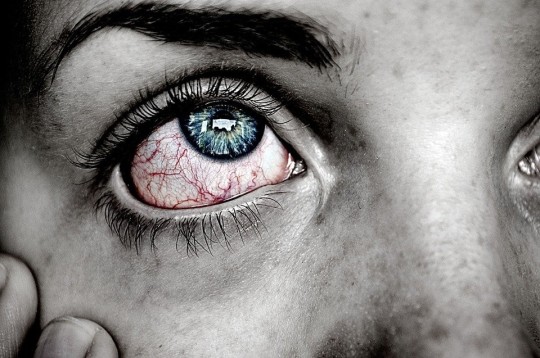
What is the terrible thing you can do to your eyes? Blindness is the number one thing most people would not like to occur, even to their worst enemies. This is because there's no going back with blindness and even partial blindness is at high risk of becoming permanent.
Subsequently, you will see most people with glasses, contact lenses, and even those who had eye surgery. Eye problems are expected from infants to the elderly, even though most problems are treatable.
Even with this in mind, most people still don't know how to care for their eyes-mecda wrote more about this. That is why you will find people engaging in the worst practices for their eyes. Perhaps what you are doing is a harmful practice to your eyes. Find out more below.
Lack of Wearing Sunglasses
Extreme levels of UV radiation are a significant threat to vision. These rays result in damages to the surface tissues, cornea, and the lens because they cannot manage the high levels. Besides, most eye problems, including cataracts and eye cancer, are a result of UV rays.
Therefore, for people who spend most of their time outdoors, it would help wear 100% UV protection sunglasses. This way, you can be sure of having a safe day out for your eyes. Even better, it would help if you came back home to an eye massage to relax your eyes as you unwind on the day with a massager from ultraeyecare.co.
Eye Tattoo
Imagine the pain of tattooing your eyeball, then imagine the dangers of doing the same. Eyeball tattoo can cause serious eye infections from the ink and needle's reaction, not to mention the eye’s inflammation and even blindness.
If you do not like your eyes' appearance, it would be best to talk to your doctor about the best contact lenses for a complete eye appearance change. This is because most people prefer clear lenses, but there are options for colored ones.
Poor Diet

In case you didn't know, a poor diet that does not contain sufficient nutrients can lead to blindness. Even the eye needs a proper diet to enhance its functions, just like any other organ in the body. Moreover, a low-nutrient meal can cause damage to the optic nerve, which can begin to cause vision impairment if not attended to instantly.
Preferably, you should seek a nutritionist's advice or a doctor on the proper diet for eyesight. Ensure you pick a diet that you will easily maintain to avoid deficiency.
Dangerous Home Remedies
You have probably come across home remedies for eye problems, such as breast milk in a pink eye and even frozen mean on a black eye. Eye problems can be an emergency, making you seek quick and available home remedies before going to the hospital. Still, it is advisable to avoid such treatments as they are not medically approved. Besides, you may worsen the condition instead of treating or improving anything.
Smoking is also a bad habit that you should quit saving your eyes for older age. Besides, don't you want to see the world's beauty even in your golden days? Take care of your eyes always.
0 notes
Text
Why The Medicare Advantage Plan Is The Right One For You
When it comes to medical insurance, you might be confused about what plans would suit you best because of past health issues or your present financial capabilities. Although Medicare health plans have various offers and you can determine which one suits you best. With the information that is to be shared here, you would decipher why the Medicare Advantage is best for you as an individual. Although there is much to be said, it is great for starters and beginners to understand the concept behind the Medicare advantage plan and how it benefits you.

Generally, the Medicare Advantage principle is a unique part of the original Medicare plan that offers more benefits and advantages to the subscribers. It covers more costs and is provided by the private health insurance firm, and this makes it a very effective plan. Although it is regulated by the federal government to avoid excessive charges on the patients, the benefits you derive from it are quite different from the original Medicare plan offers. The care options and the cost have been factored into one plan as explained on mecda.org.
What Is The Medicare Advantage?
Firstly the Medicare advantage is provided to the populace by the private insurance health organizations like comparemedicareadvantageplans.org which has been approved by the government agencies regulating the country’s health sector. This plan can also be referred to as Medicare part C. By law, every Medicare plan is supposed to embody what the original Medicare plan offers. It means it includes the same hospital and outpatient services the traditional Medicare plans cover. However, the Medicare advantage plan covers more than the original Medicare programs, which can also be customized to suit the client’s needs.

Benefits Offered By The Medicare Advantage
There are numerous advantages that the Medicare advantage offers to the patients, which include but not limited to care options, cost into one plan, and many more. The plans cover services like the Fitness club membership, Dental coverage, Hearing coverage, and Vision coverage which are not available in the traditional Medicare plans. Meanwhile, some plans include drug prescription coverage and can also be modified to suit chronic illness that might be out of the listed benefit of the Medicare advantage. With the coverage, you would get Medicare parts A, B, and D, while the other aspects of Medicare are like the icing on the cake.

What Is The Cost Of The Medicare Advantage
Since the Medicare advantages offer more benefits than the regular Medicare plans, it is more expensive than the original Medicare. Here are some main differences, including premiums, deductibles, copayments, and firm limits on the pay for care. These are the extra charges involved in the Medicare advantage plan that makes it more expensive than the original Medicare. Also, the Medicare Advantage is run by a private firm that collects the plan to which you have subscribed
0 notes
Text
How to Get the Most Out Of Your Face Mask

Undoubtedly, coronavirus’s low variants in some areas and the vaccine underway are likely to make most people relax on their safeguarding methods. However, the emergence of new strains of coronavirus surfacing should make you take more precautions than ever.
Medical experts claim the new strain to be spreading faster and fatal than the previous. This makes many countries resurface the lock-down and stay-at-home rules to ensure the spread is not comprehensive and quick.
Apart from washing hands with soap or sanitizer - mecda wrote more about this, wearing a mask is also mandatory to keep you safe from contracting the virus when you are in public. So, how do you ensure your face mask is protecting you in the best way possible?
Double Masking
If wearing an ordinary mask can protect you and filter about 50% of antibodies, how about double masking for complete protection?
The best approach for double masking is wearing a two-layered cloth mask over a surgical mask. This way, the cloth mask with a push against the surgical face mask making the edges rest firmly on your face with no gaps to allow any antibodies.
However, the CDC does not advise wearing two surgical masks or KN95 masks with any other mask type. Preferably, you will find all kinds of face masks at protective hygiene.co.za.
Add a Face Mask Brace or Filter
Usually, the majority of face masks have filter pockets in between layers. Still, some people use face masks without a filter; thus, it is advisable to add a filter to increase protection.
One-use paper-style filters are for inserting into a face mask to offer a breathable layer that ensures an adequate cover. Preferably, put a surgical face mask in your mask’s filter pocket for a double masking effect.
Better still, a recyclable silicone brace is for closing any gaps available in a single mask. According to a study, a surgical mask with a brace is likely to filter nearly 95% of unwanted foreign bodies.
Fitting Mask

The CDC advises everyone to wear a properly fitting mask because it stands a better chance of protecting you from coronavirus. A proper face mask should completely cover your nose and mouth fit tightly against the edges of your face and below your chin, without gaps to let in air.
Therefore, if you adjust your mask frequently, you need to either adapt it to fit correctly or buy a new one.
Get a Professional-Grade Mask
The recommended professional masks are the N95 grade that filters about 95% of germs and NIOSH-endorsed.
However, the N95 grade is mainly for medical practitioners, remaining scarce or very costly for people to access. With that, other NIOSH-approved masks are easy to obtain and still offer maximum protection.
These masks are, KN95 which is the Chinese version of N95, and the KF94 is the Korean model of N95. Both of these approved models make an ideal alternative to cloth and surgical masks.
Even with using high-end masks, ensure you practice absolute cleanliness by throwing the disposable after every use. Always wash your hands after taking off your cover.
0 notes
Text
What to Do When You Lose Control around Food

With the COVID-19 pandemic causing lockdown and people staying at home, many people adapted to poor feeding habits. Others would eat anything and everything without any diet plan or exercise, while others lacked proper meals due to losing jobs, hence less money to buy basic needs.
One thing for sure is that most people lost control of themselves around food. Some overate while others binged on anything, even during weird hours of the day, to satisfy the urge. This is not a good thing as it can lead to bulimia and binge eating disorder.
However, there are plenty of reasons that cause the loss of control around food. Losing control around food can be due to emotions, biology, and even the environment. But if you want to lose weight, you have to figure how you will curb this behavior as MECDA wrote more about this.
Read on.
Eat Regularly
Skipping and restricting meals are among the top reasons for making you lose control of food. The best approach, in this case, would be to eat healthily to your fill to avoid feeling hungry anytime soon. Remarkably, there are diet plans like healthyketoclub.weebly can help you eat as much without fear of adding weight but rather lose or maintain what you have.
Even better is eating regularly is small portions of healthy meals. When you fail to eat enough, your body will feel deprived. This will make you lose control of food and even eat those you are supposed to stay off-limits.
Overcome or Rephrase Negative Food Vibe

Sometimes, people set rigid and harsh food rules on what, how, and when they should eat; fail to that, they feel mad or worthless. Still, with these strict and unrealistic rules, you can't help but feel weak around food when you get to see your favorite being served.
When you eat something you vowed to avoid, you feel bad and think that nothing can undo the process, so you should go on and feed on whatever. Diet plans are usually hard to maintain. The best approach would be to rephrase the foods you call 'bad' and 'off-limits.'
So instead of cursing yourself, try reassuring yourself that there's nothing wrong with eating something you enjoy.
Get Help
While we may be blaming restrictive diets and skipping meals as the causes of losing control around meals, it would consider that there can be more than what meets the eye.
At times there are underlying reasons that can make you lose it around meals. Some reasons may be metal, especially if it's something that suddenly came to be from nowhere. Without knowing the exact cause, a doctor can suggest a measure that can affect you in terms of stigma and even cause you stress.
Moreover, there are diseases like diabetes that can make someone have an increase in appetite. While most people would brush it off, as usual, to eat anything and anytime, it would be best to get expert help to look at your condition. This way, you will be preventing the underlying issues from accelerating to something worse.
Generally, whenever you feel like your eating habit has changed to either inadequate or excess feeding, share with someone close. This way, it would help you have a second opinion to change things for the better.
0 notes
Text
Diabetes Food Advice to Follow or Not

An effective diabetes diet starts from telling good advice from bad advice that you should not follow. With so many myths online, remember the key to controlling your diabetes is from knowing how to maintain average blood sugar levels.
While building a good diabetes diet, you may receive obstacles like finding it hard to cope with the new foods emotionally to numerous advice online and offline. But, say goodbye to the confusion.
We made a list of advice worth following or not when creating your diet for diabetes from various online and offline expert sources. Besides, some diets may differ with the types of diabetes. MECDA wrote more about this.
Sound Advice: Have Your Plate Half-Filled With Veggies
Like the average nutritionist telling everyone, filling your plate half with vegetables is the best way to eat healthily. When you eat more vegetables, you consume more fiber which is essential for the general body functioning.
Besides, in regards to diabetes, fiber is critical for regulating blood sugar and making you stay full for an extended period. Better still, you can ask the experts at diabetesiq.com for the vegetables to take raw or cooked for regular change in diet.
Bad Advice: Monitor Your Blood Sugar Once Daily
With diabetes, you need to check your blood sugar regularly, especially if you are trying out new foods. It would help to inspect not just once but several times a day. Once a day, blood sugar monitoring will only give you a snapshot of how your blood is behaving for the moment.
However, you need to see how your blood sugar reacts to factors like food, stress, and even exercise at every moment of the day. For best results, test your blood sugar before eating and perhaps 2 hours later to get a clear picture of the reaction.
Sound Advice: Always Have a Snack At Hand

At times, things happen that can delay your feeding window, for instance, prolonged business meetings or even delayed meal times. To be on the safe side, always have a nutritional snack to avoid dropping blood sugar, hence triggering an adverse diabetic reaction.
Also, never go for over 5 hours without eating to ensure your hunger levels and blood sugar is stable. Preferably, the best go-to snack is nuts, which have high fiber hence will keep you filled for a long time till you get a decent meal.
Bad Advice: People with Diabetes Should Avoid Fat
Usually, fats are wrong because of the high levels of calories instead of carbs and proteins. But, people with diabetes should not avoid fat.
The type of fat is more important than the amount you consume. There are good and bad fats. People with diabetes need to finish the good fats, including avocados, fish, nuts, and olive oil. These good fats have a low glycemic load, which will not trigger your sugar levels.
Generally, what you eat should not solely be upon you, but it would be best to include your doctor and nutritionist as well. Having experts' views on board when creating a healthy diet will help you settle on helping control your sugar levels well.
0 notes
Text
Some Life Purpose And Goal Setting Questions A Life Coach Can Help You Answers
At some point, you might have asked yourself if you are living to the fullest potential of your life or if you are achieving your laid down goals. Of course, that is a quest almost everyone asks him or herself at a point in life. That said, it is quite unfortunate that most of us only set goals, but we do not work towards them; this is because, at some point, we feel the goals are unachievable, or they are too ambiguous. However, setting goals is a major way to change your lifestyle.

On mecda.org, you will find how a life coach could give you a voice to the questions that are subtly disturbing your mind. To help you articulate what the issue is and what you have desired to work towards, hiring a life coach makes the journey less difficult. It might seem tasking, yet it is more convenient than traveling the road alone. A life coach then works with you to find the right solution and draw a plan to achieve these solutions. You might have health challenges or fitness issues you want to overcome; through a life coach, you quickly follow the path of success and have your goals achieved in no time.

What Do You Want To Achieve
Crystallizing your aim and goals in your mind can be very difficult at times; it might require you to contemplate over and over before you get the correct answer. At some point, you might need an expert who would ask you relevant questions, which would guide you to arriving at the answers your want to have as your goals. Expert life coach on lifecoachlibrary.com helps, you retrace your step backward and guides you in understanding what you want to achieve. Mostly your aim might be to achieve a stable financial life, or have a healthy lifestyle and relationship with others, while you would also want to live a more fulfilling life. People often seek a life coach because they believe they lack something meaningful in their life.
How Can You Become Better Version Of Yourself Health Wise
You might have often tried many options and ways you feel would be the best for you when it comes to becoming a better version of yourself. Of course, with the help of a life coach, you are most likely to answer all your questions if you are ready to open up and show what you aim to achieve. Becoming a better version of yourself does not rely on how much you tried but centers on the steps and suitable methods you have implemented for a better you. Your health, finances, and other aspects of your life can become much better if you aim to hire a life coach who would guide you.
0 notes